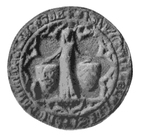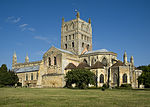Tewkesbury railway station
Disused railway stations in GloucestershireFormer Midland Railway stationsGloucestershire building and structure stubsPages with no open date in Infobox stationRailway stations in Great Britain closed in 1961 ... and 4 more
Railway stations in Great Britain opened in 1840South West England railway station stubsTewkesburyUse British English from March 2015

Tewkesbury railway station was a station on the Midland Railway between Great Malvern and Evesham.
Excerpt from the Wikipedia article Tewkesbury railway station (License: CC BY-SA 3.0, Authors, Images).Tewkesbury railway station
Cotswold Gardens,
Geographical coordinates (GPS) Address External links Nearby Places Show on map
Geographical coordinates (GPS)
| Latitude | Longitude |
|---|---|
| N 51.9962 ° | E -2.1483 ° |
Address
Tewkesbury
Cotswold Gardens
GL20 5DW , Mitton
England, United Kingdom
Open on Google Maps









